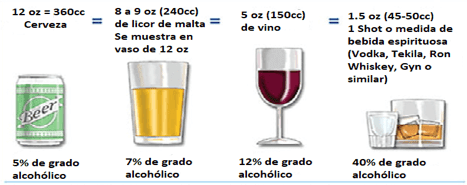Alcohol Consumption
In this section, you will be asked questions about your drinking pattern, type of beverages preferred, quantity, frequency of drinking. You will also be asked questions that will allow us to assess your level of dependence. Click on the question you want to know more about.
- Have you consumed any alcohol in the last 12 months?
- Frequency
- How often?
- What type of alcohol do you prefer?
- How much do you drink on each occasion?
- Section Degree of Dependency
- ALCOHOL EQUIVALENT
- BINGE DRINKING
Have you consumed any alcohol in the last 12 months?
Alcohol consumption can be linked to a decline in your health. To determine the impact on your risk factors, it is important to know whether you have consumed any alcoholic beverages in the past 12 months.
Frequency
Indicate whether the period of frequency of alcohol consumption, choose whether the frequency to be indicated is weekly or monthly. These data will help us to correctly calculate your health indicators.
How often?
Once you have determined the period, in this question please enter the number of times you consume alcohol on average in the frequency of time indicated in the previous question. For example: 3 times per week.
What type of alcohol do you prefer?
The type of alcohol will help us determine the alcohol equivalent, an internationally developed metric that allows us to compare different types of alcoholic beverages. From the three options, you can choose the one you consume most, between Beer, Wine or Other for other alcoholic beverages (vodka, whisky, tequila, etc.).
How much do you drink on each occasion?
The amount of drinking on each occasion helps us to calculate and determine your risk associated with alcohol consumption based on the alcohol equivalent.
The Alcohol Equivalent
It is an internationally developed metric, which compares different types of alcoholic beverages, based on the alcohol concentration of the different beverages. The beverage alcohol equivalents ingested are calculated as follows:
Volume in ounces of beverage x Alcohol content in %/ 0.6
If we apply the above formula to the different beverages, we can obtain a beverage comparison table that more or less resembles the following and allows us to compare them with each other:

Binge Drinking
The term refers to the High Risk Drinking Pattern, internationally the most accepted definition is the consumption of more than 4 Alcoholic Beverage Equivalents in a day or a consumption of more than 14 Alcoholic Beverage Equivalents per week (these definitions are for males), for females the High Risk Drinking Pattern would be defined by a consumption of more than 3 Alcoholic Beverage Equivalents in a single day or more than 7 Alcoholic Beverage Equivalents per week.*
Click here to learn more about Binge Drinking.
*When consuming the same amount of alcohol, women tend to have higher levels of alcohol in their blood and these levels remain elevated for longer. One reason for this is that women on average weigh less than men. In addition, alcohol is distributed through the water present in the body and pound for pound, women's bodies retain less water than men's, i.e. the Volume of Distribution for alcohol is lower in women than in men. After a man and a woman of the same weight drink the same amount of alcohol, the level of alcohol concentration in the woman's blood tends to be higher, putting her at greater risk. Click here to learn more.
Degree of dependency
The questions associated with Degree of Dependence are optional questions that can indicate a next level of information to learn more about the impact of this variable on your health status. Although they do not directly measure intensity of use, they do allow you to make inferences about the severity of dependence and the level of help you may need to reduce your risk. The questions in this section are intended to assess:
- Presence of Dependence Symptoms:the first 3 questions were designed to assess the presence of dependence symptoms, lack of control over drinking, pre-eminence of drinking over important activities and morning drinking.
- Hazardous use of alcohol: the following 4 questions are designed to assess feelings of guilt after drinking, loss of consciousness, accidents related to alcohol use, concerns of significant others about your drinking habit.



